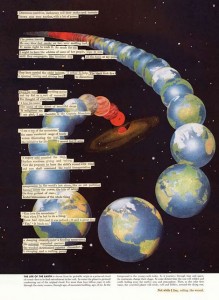 Electric Literature envisions a new (and “robust”) market for fiction: “Literature, Plugged In“. Here’s a low point from this manifesto of sorts from the EL editors, describing the origins and history of the publication; editors and publishers are really going to want to read the entire thing:
Electric Literature envisions a new (and “robust”) market for fiction: “Literature, Plugged In“. Here’s a low point from this manifesto of sorts from the EL editors, describing the origins and history of the publication; editors and publishers are really going to want to read the entire thing:
After landing Jim Shepard and Michael Cunningham for our debut, we thought we had it made. But shortly after the launch of Electric Literature No. 1, I found myself lying on the couch at 3 a.m., googling “how to deal with failure.” Despite all the work we had done to raise money, procure great stories, and master an impressive array of new publishing formats, our sales sucked. It felt as if the lacerating truth was about to come out: no one cares about literature.
Every little thing we did—landing a positive mention on the Washington Post Web site, releasing a video, publishing a new issue, holding a contest—would bump up our Web traffic and increase book sales. But within a few days, that bump would disappear. When we started, we thought we’d spend 80% of our time discovering great new writing and discussing literature. Instead, we learned that promotion is a publisher’s biggest challenge. By the end of our first month, we were spending 80% of our time on promotion.
Artifice #2 has landed—so this is a good time to look back on their much-lauded first issue.
 The artwork included in increasingly more and more graphic literary magazines (pdf) isn’t often the main focus of attention, though it is often a big part of why readers purchase one magazine over another. Some of the stuff can be quite gorgeous, worth the price of purchase, such as the images in the latest issue of MAKE: A Literary Magazine.
The artwork included in increasingly more and more graphic literary magazines (pdf) isn’t often the main focus of attention, though it is often a big part of why readers purchase one magazine over another. Some of the stuff can be quite gorgeous, worth the price of purchase, such as the images in the latest issue of MAKE: A Literary Magazine.
Greg Weiss chimes in with his third, penultimate, segment on the experience of writing for and reading lit mags in the 21st century: “Conflict of Interest III: Electronic Journals.” And don’t miss the excellent follow-up commentary from Michael Copperman.
On Editing in the Electronic Arena: Kevin Nguyen inquires into the editorial processes at McSweeney’s, The Awl, and The Morning News. Here’s a bit from the portion on McSweeney’s online editor Christopher Monks:
Christopher Monks has been editing the bulk of McSweeney’s web content since 2007, and along with his predecessor John Warner, who works part-time handling the 15 recurring columnists, they are the only two on McSweeney’s staff that don’t reside in the Bay Area. (Monks is a stay-at-home dad in Boston, MA; Warner resides in Clemson, SC.)
“I upload to the site every morning right here from the MacBook on my dining room table. Usually my two bleary-eyed sons are there watching me, munching on their Golden Grahams, trying to figure out what exactly it is I do for work,” Monks said.
Monks receives roughly 200 submissions a week, which gives him quite a bit to read. But the upside is that he can be picky — almost all of the site’s content comes from unsolicited submissions — and generally, most of the accepted humor pieces don’t need much editing. Monks usually makes a few tweaks to run by the writer before the article is ready for publication. But there are exceptions.
“From time to time a piece will come in with a brilliant conceit, but not great execution, and if I think it’s worth a major overhaul I’ll work with the writer to make it fit for the site,” Monks said.
 As many will recall, founding editor & publisher of Grand Street, Ben Sonnenberg, died this past summer. The Nation recently published a fantastic retrospective of Sonnenberg and one of the greatest literary magazines of the 20th century.
As many will recall, founding editor & publisher of Grand Street, Ben Sonnenberg, died this past summer. The Nation recently published a fantastic retrospective of Sonnenberg and one of the greatest literary magazines of the 20th century.
A Manual for Readers by David Backer.
Finally: Fictionaut gets some Internet love.
Every Tuesday, Travis Kurowski presents Luna Digest, a selection of news from the world of literary magazines. Travis is the editor of Luna Park, a magazine founded on the idea that journals are as deserving of critical attention as other artistic works.

No Comments
Leave a Comment
trackback address